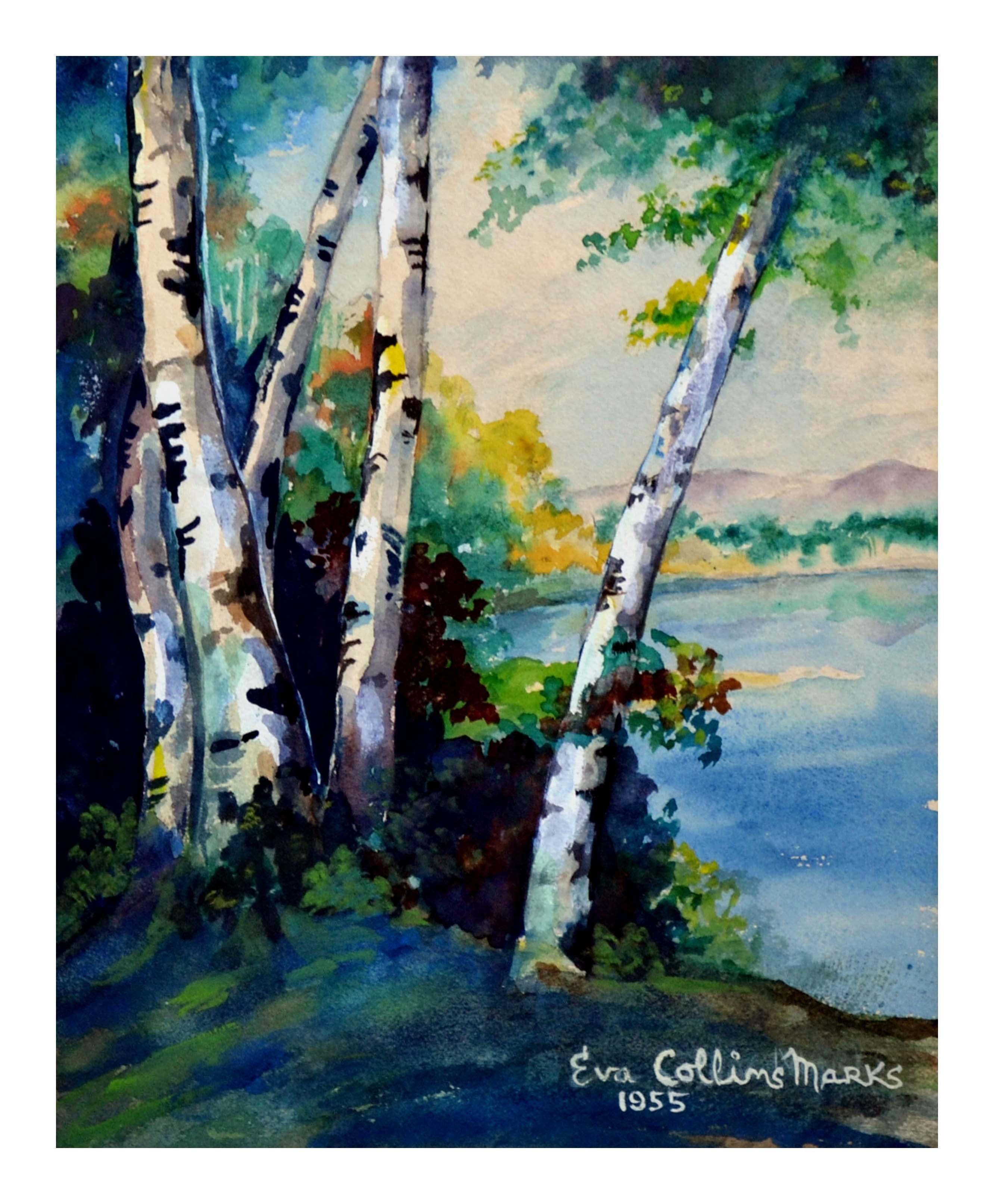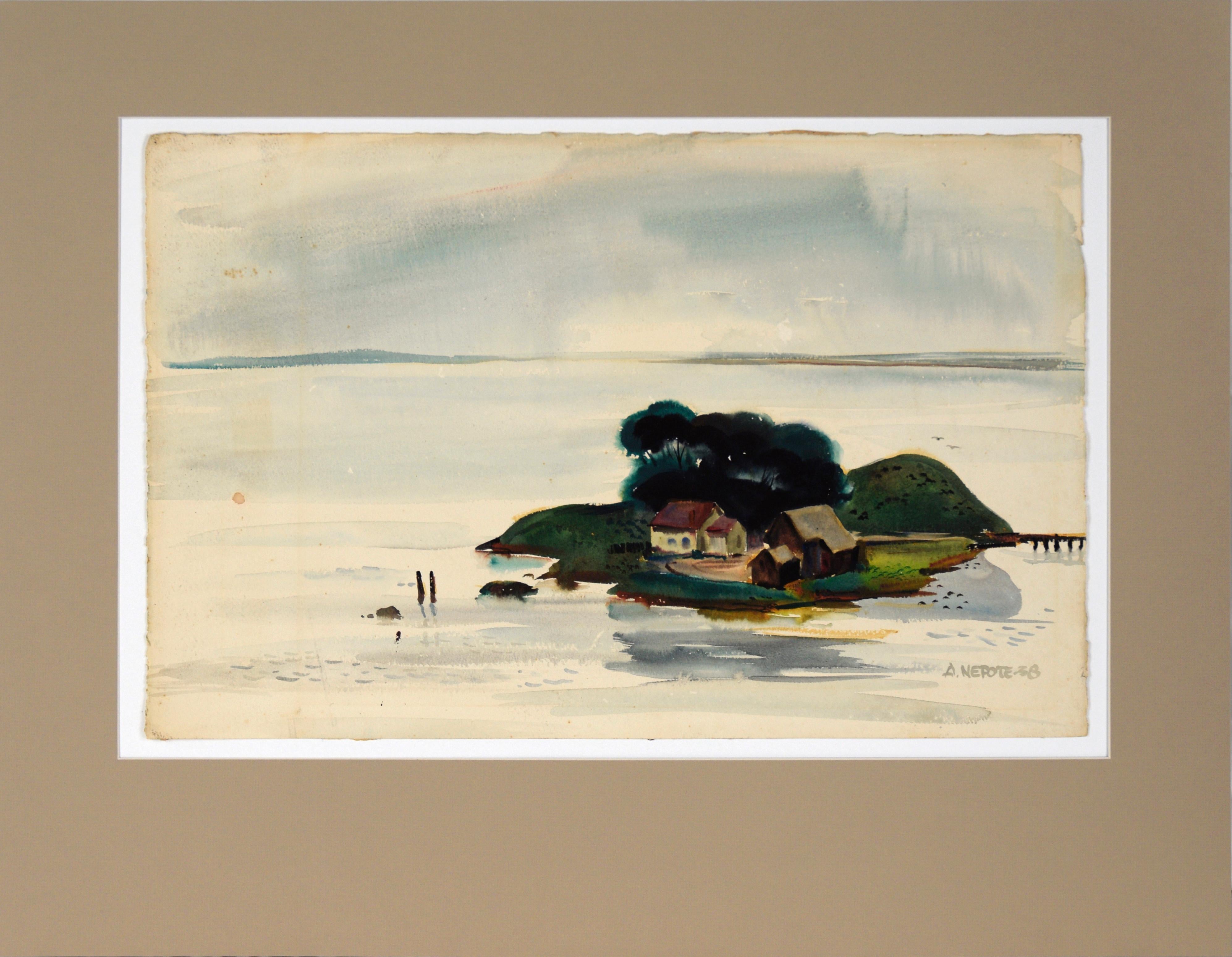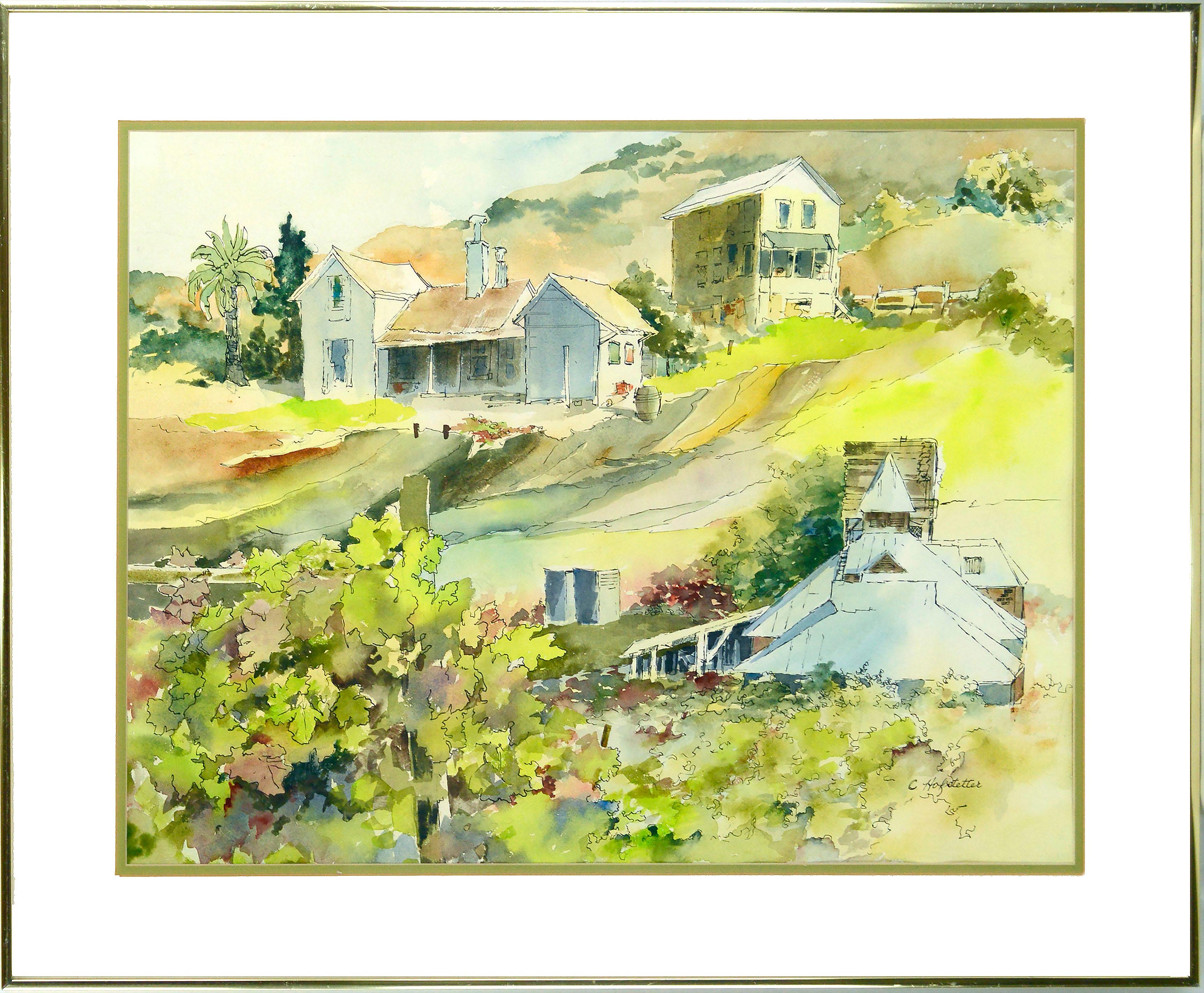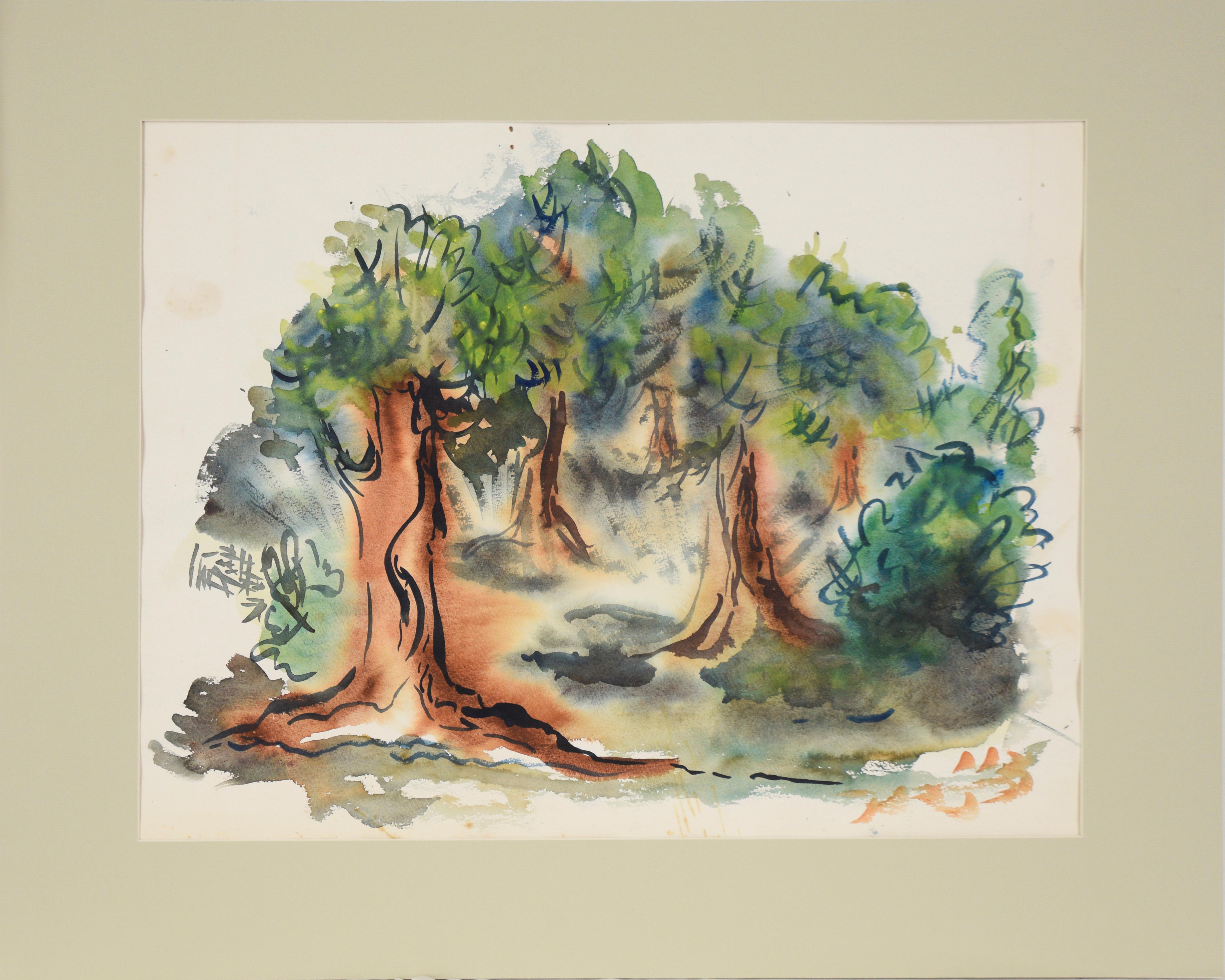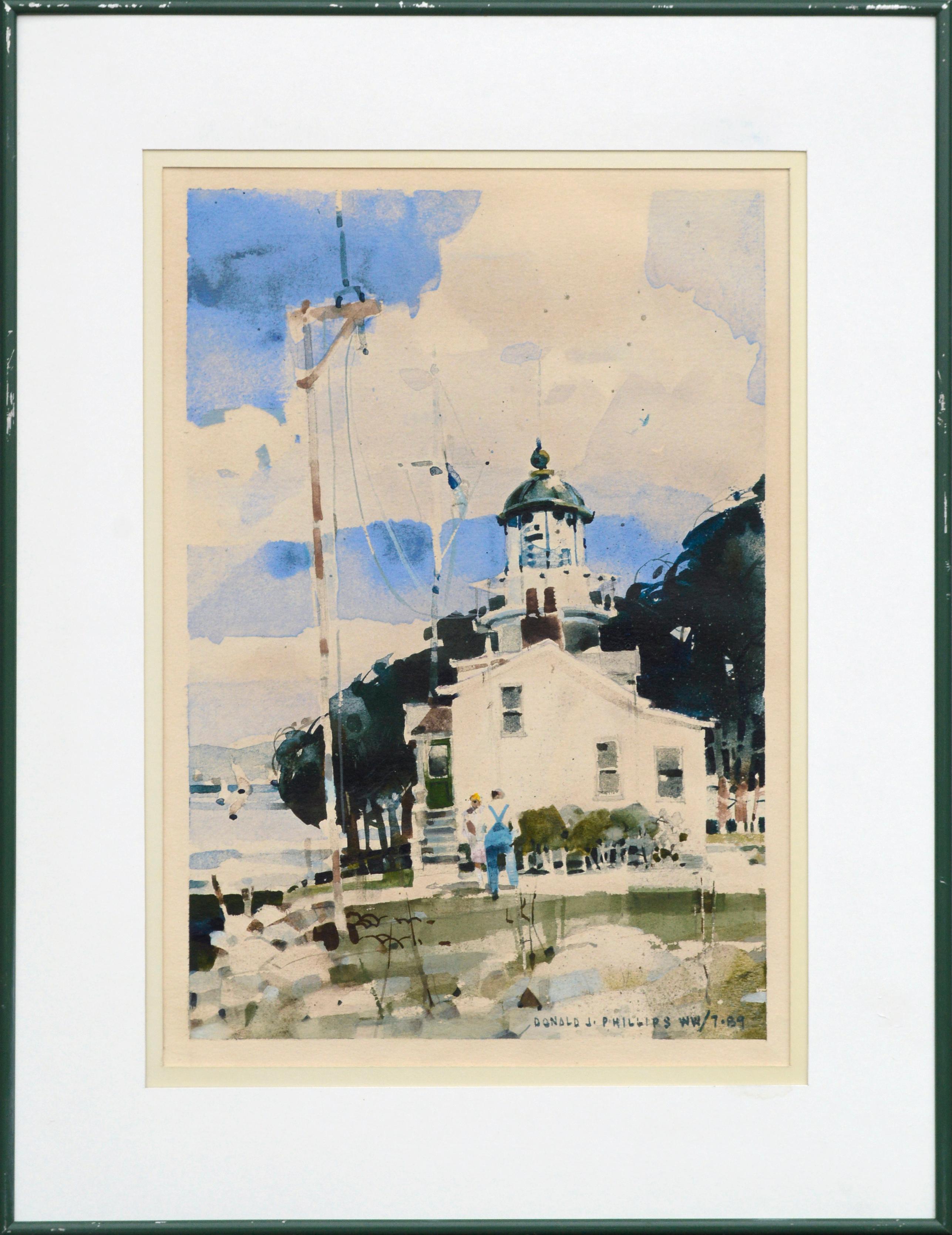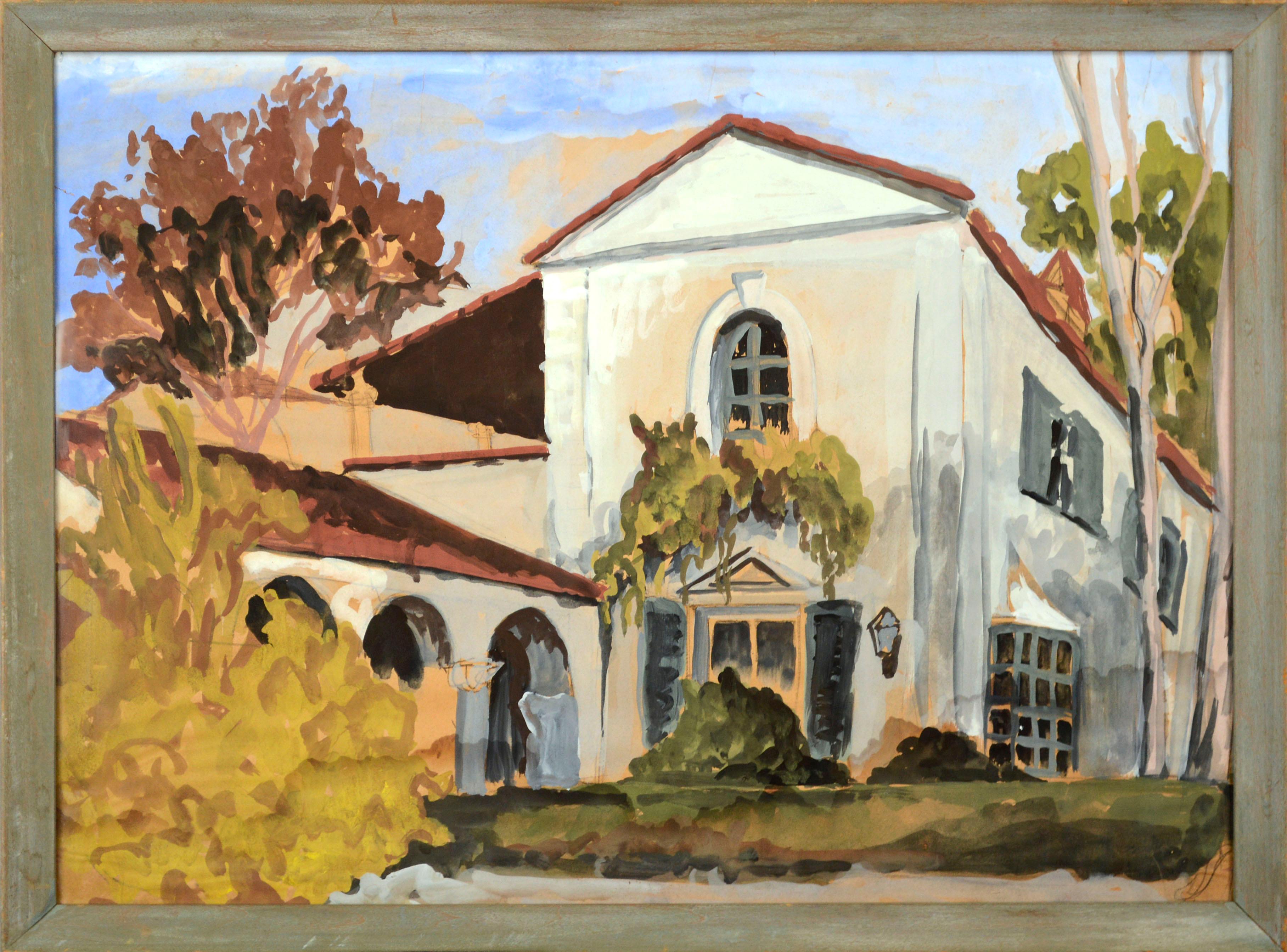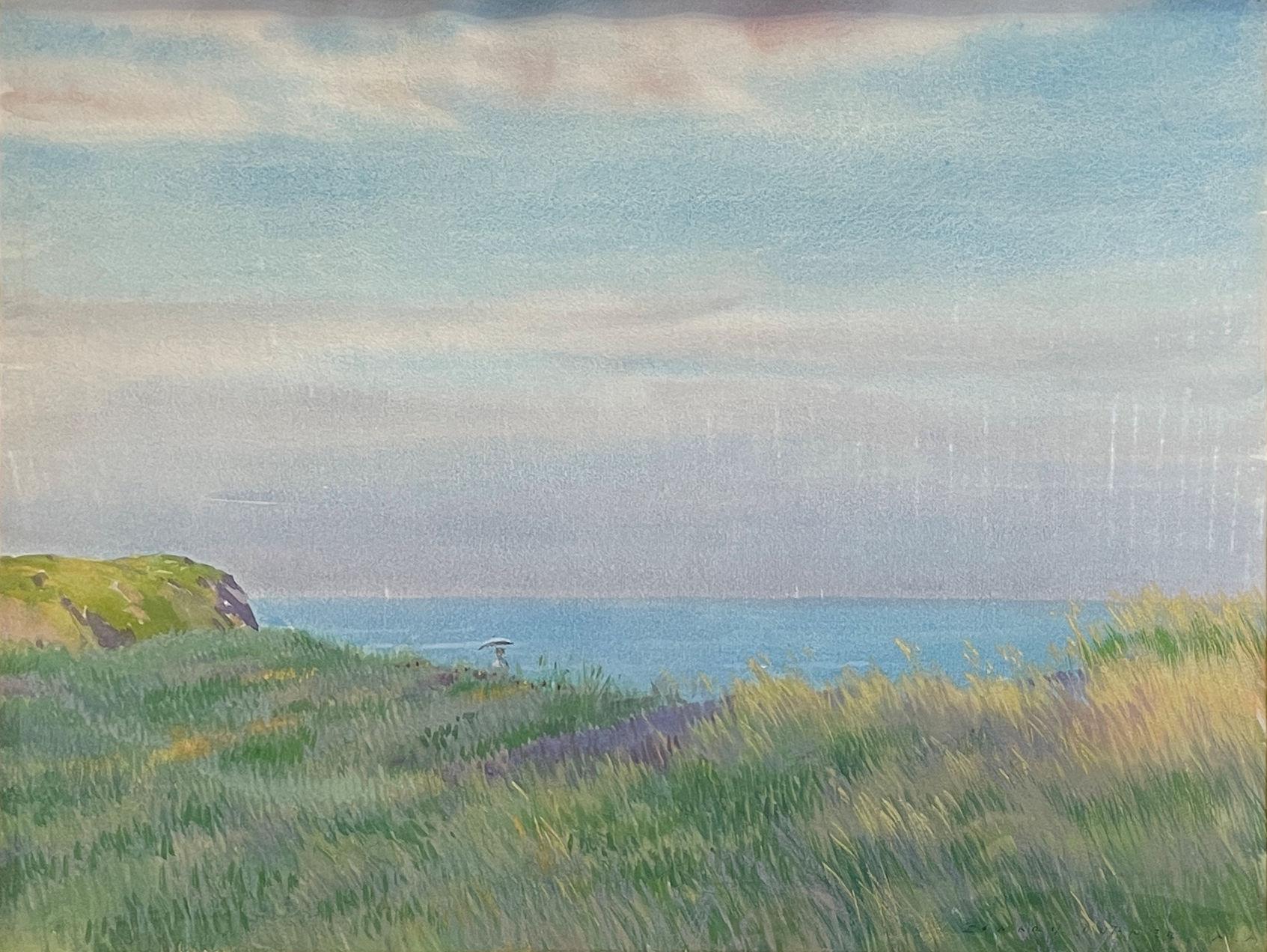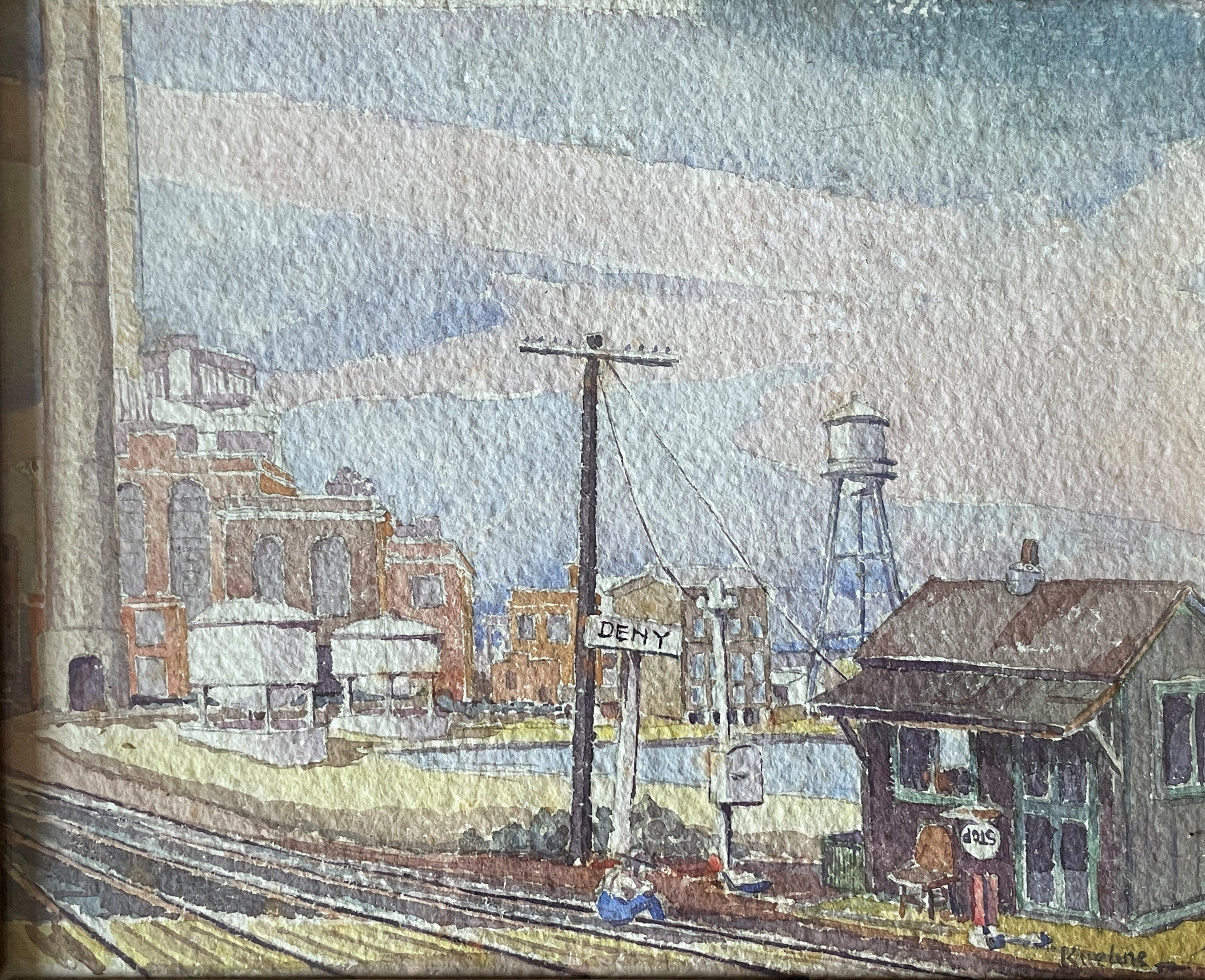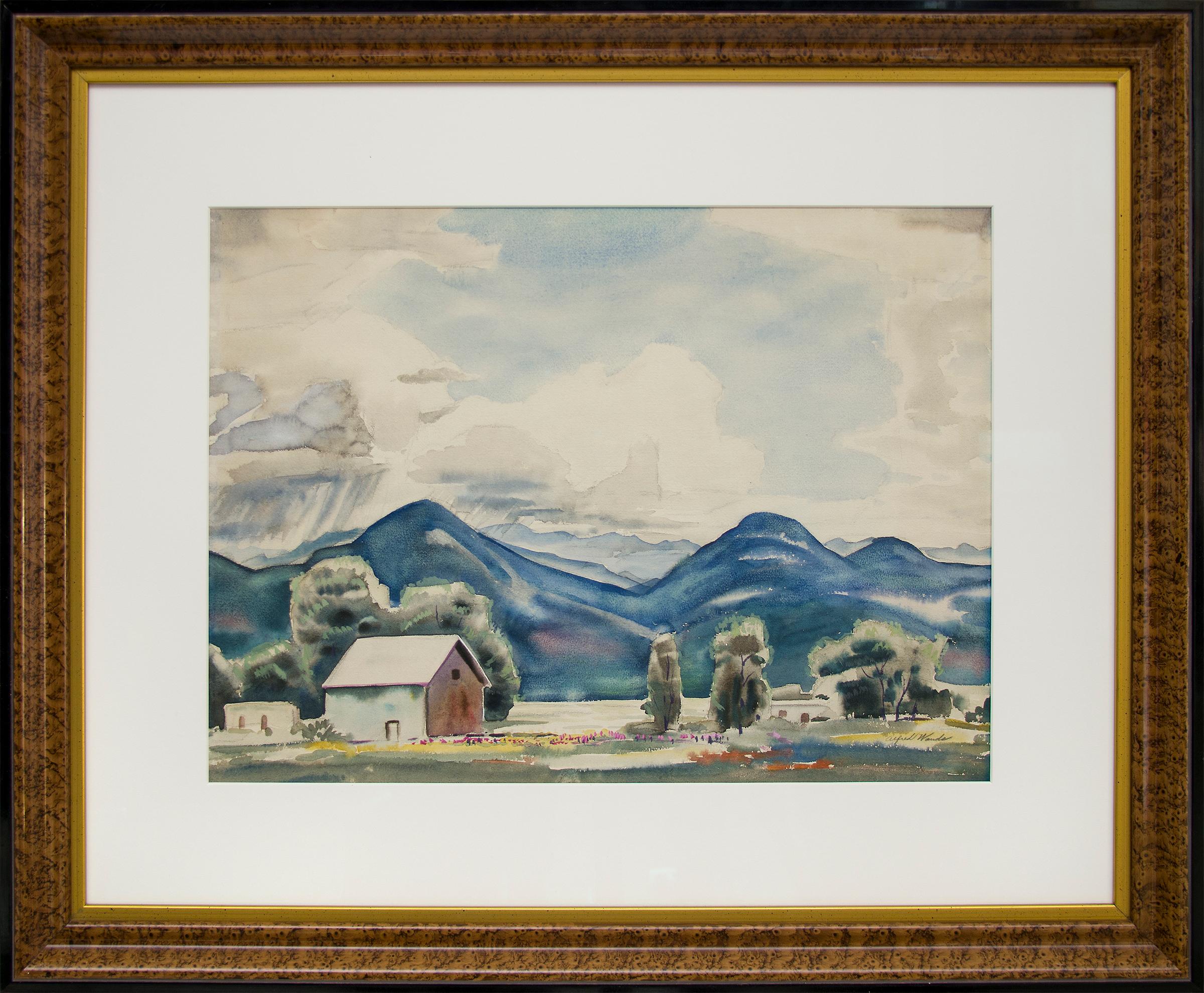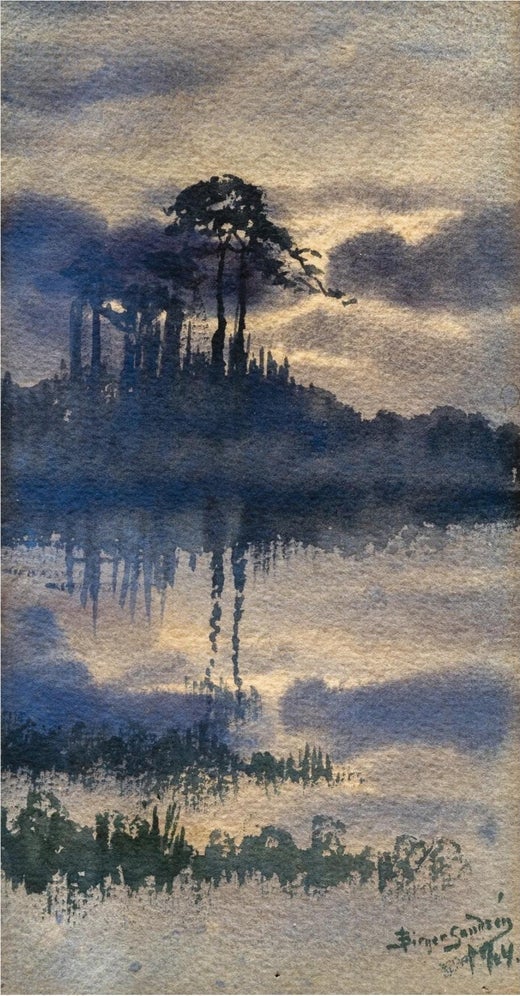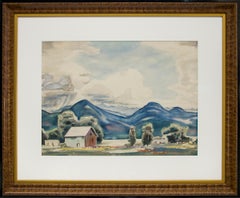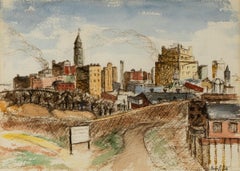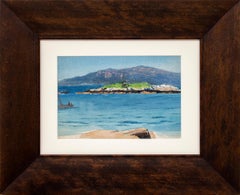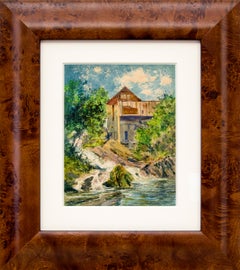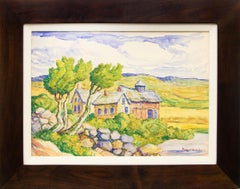
Kansas Farm (Prairie, River, Farm House and Barn)
View Similar Items
Want more images or videos?
Request additional images or videos from the seller
1 of 10
Birger SandzenKansas Farm (Prairie, River, Farm House and Barn)1940
1940
$9,995List Price
About the Item
- Creator:Birger Sandzen (1871-1954, American)
- Creation Year:1940
- Dimensions:Height: 22.5 in (57.15 cm)Width: 29.75 in (75.57 cm)Depth: 1 in (2.54 cm)
- Medium:
- Movement & Style:
- Period:
- Condition:very good to excellent condition with no notable damage, paint loss, tears, punctures, etc.
- Gallery Location:Denver, CO
- Reference Number:Seller: DCG-213271stDibs: LU2731747933
Birger Sandzen
Birger Sandzén was encouraged from an early age to pursue his interest in art. Sandzén’s formal education began at the Skara School in Skara, Sweden at the age of ten. At Skara, he studied with Olaf Erlandsson who introduced the young artist to oil painting. After graduating from Skara in 1890, Sandzén studied for a semester at Lund University in Lund, Sweden. The following year, he went to Stockholm intending to study at the Royal Academy. Due to a lack of vacancy, Sandzén instead studied with one of Sweden's best painters and etchers, Anders Zorn, as well as with Richard Bergh, and Per Hasselberg in what was later to become the Artists League. Early in 1894, Sandzén took a class taught by Aman-Jean, who introduced him to Pointillism. Sandzen used a Pointillist, or Tonalist, approach to painting in his work until around 1910. Sandzén learned about an opening on the faculty of Bethany College in Lindsborg, Kansas and immediately applied. He was hired by the college and relocated to Kansas in the fall of 1894. In 1899 he was appointed principal art teacher and head of the Art Department. Sandzén held both positions until his retirement in 1946. Sandzén first visited the Rocky Mountains of Colorado in 1908 and began painting in the Colorado Springs area around 1916. The artist made his first trip to New Mexico in 1918 and was a frequent visitor to Santa Fe and Taos in the years that followed. Sandzén spent the summers of 1923-24 teaching at the Broadmoor Academy in Colorado Springs, Colorado (presently the Colorado Springs Fine Arts Center). He also taught at Chappell House (the forerunner to the Denver Art Museum), Utah State Agricultural College, Stephens College, the University of Michigan, and the Kansas City Art Institute. Though he traveled often, Sandzén continued to live in Lindsborg until his death in 1954.
About the Seller
5.0
Gold Seller
Premium sellers maintaining a 4.3+ rating and 24-hour response times
Established in 1979
1stDibs seller since 2013
291 sales on 1stDibs
Typical response time: 11 hours
Authenticity Guarantee
In the unlikely event there’s an issue with an item’s authenticity, contact us within 1 year for a full refund. DetailsMoney-Back Guarantee
If your item is not as described, is damaged in transit, or does not arrive, contact us within 7 days for a full refund. Details24-Hour Cancellation
You have a 24-hour grace period in which to reconsider your purchase, with no questions asked.Vetted Professional Sellers
Our world-class sellers must adhere to strict standards for service and quality, maintaining the integrity of our listings.Price-Match Guarantee
If you find that a seller listed the same item for a lower price elsewhere, we’ll match it.Trusted Global Delivery
Our best-in-class carrier network provides specialized shipping options worldwide, including custom delivery.More From This Seller
View AllSangre de Cristo Mountains Watercolor Landscape Painting, Southern Colorado
By Alfred Wands
Located in Denver, CO
This original watercolor painting by Alfred Wands (1904-1998) captures the breathtaking beauty of the Sangre de Cristo Mountain range in Sou...
Category
20th Century American Impressionist Landscape Paintings
Materials
Watercolor
1950s Denver Skyline Painting – Graphite & Watercolor Colorado Cityscape Art
Located in Denver, CO
A captivating midcentury cityscape titled "Denver Skyline", this original 1950s watercolor and graphite painting offers a rare industrial-era view of lower downtown Denver, Colorado....
Category
1950s American Impressionist Landscape Paintings
Materials
Watercolor, Graphite
19th Century 1925 California Coast Marine Landscape Watercolor, Rocks & Waves
By Charles Partridge Adams
Located in Denver, CO
American Impressionist California coastal watercolor painting by Charles Partridge Adams (1858-1942), circa 1925. This stunning piece captures the beauty of the coastline with vibran...
Category
1920s American Impressionist Landscape Paintings
Materials
Watercolor
Charles Partridge Adams Watercolor – New Hampshire Mill Scene, c. 1900
By Charles Partridge Adams
Located in Denver, CO
This elegant original watercolor painting by renowned landscape artist Charles Partridge Adams (1858–1942) was created circa 1900 and captures a peaceful New England scene near Plain...
Category
20th Century American Impressionist Landscape Drawings and Watercolors
Materials
Watercolor
19th C. American Impressionist Gouache of Colorado Mountains in Spring
By Charles Partridge Adams
Located in Denver, CO
This original circa 1910s plein air field study by renowned Colorado landscape artist Charles Partridge Adams captures the serene beauty of the Rocky Mountains in a masterful display...
Category
1910s American Impressionist Landscape Paintings
Materials
Gouache
1940s Western Landscape of Silver Plume, Colorado, Framed Oil Pastel Drawing
By Elsie Haddon Haynes
Located in Denver, CO
A captivating early 20th-century Western mountain landscape by Colorado artist Elsie Haddon Haynes (1884–1963), this original oil pastel drawing captures the charming town of Silver Plume...
Category
1930s American Impressionist Landscape Drawings and Watercolors
Materials
Oil Pastel
You May Also Like
"Canal at Indian Mound Road" RARE Ben Fenske Gouache work on paper black & white
By Ben Fenske
Located in Sag Harbor, NY
Painted during the 2015 Winter Equestrian Festival in Wellington, Florida. A black and white depiction of a canal, is barely recognizable, due to Fenske's wild brushstrokes and lack...
Category
21st Century and Contemporary American Impressionist Landscape Paintings
Materials
Paper, Gouache
Mount Monadnock
By Frank Weston Benson
Located in Milford, NH
An exceptional watercolor of Mount Monadnock snow capped in winter in New Hampshire by American artist Frank Weston Benson (1862-1951). Benson was born in Salem, Massachusetts and went on to study in Boston at the Museum School of Fine Arts and later with Julian Lefebvre and Gustave Boulanger at the Academie Julian in Paris. Benson was well known for his impressionist landscapes and seascapes, and etchings of hunting scenes.
Watercolor on paper, signed lower left F.W. Benson with inscription “To Mrs Bush,” titled on Vose Galleries...
Category
Early 20th Century American Impressionist Landscape Drawings and Waterco...
Materials
Paper, Watercolor
Mount Monadnock
By Gifford Beal
Located in Milford, NH
A fine monochromatic watercolor landscape painting of Mount Monadnock in New Hampshire by American artist Gifford Beal (1879-1956). Beal was b...
Category
Mid-20th Century American Impressionist Landscape Drawings and Watercolors
Materials
Paper, Watercolor
Mid Century River Birches Landscape Watercolor
Located in Soquel, CA
Mid Century River Birches Landscape Watercolor
Gorgeous vibrant mid century watercolor on paper painting of river birch trees by artist Eva Collins Marks (American, 20th century),19...
Category
1950s American Impressionist Landscape Paintings
Materials
Paper, Watercolor
$372 Sale Price
20% Off
Island in the San Francisco Bay, Mid Century Landscape by Alexander Nepote
By Alexander Nepote
Located in Soquel, CA
Mid Century Island in the San Francisco Bay Landscape by Alexander Nepote
Lovely late 1930's Impressionist watercolor of a Bay Area island by listed California artist Alexander Nepo...
Category
1930s American Impressionist Landscape Paintings
Materials
Paper, Watercolor
$1,397 Sale Price
35% Off
California Vineyard, Large-Scale Farmhouse Landscape Watercolor
By Carolyn Hofstetter
Located in Soquel, CA
Vibrant large-scale landscape watercolor of a California vineyard by S.W.A. artist Carolyn Hofstetter (American, b.1927). This beautiful scene of ...
Category
Late 20th Century American Impressionist Landscape Drawings and Watercolors
Materials
Paper, Watercolor
$1,080 Sale Price
20% Off
Recently Viewed
View AllMore Ways To Browse
Impressionist Farm Barn Painting
C Babcock
John Held Jr
Peter Cook
John F Carlson
John Carlson Impressionist Artist
George Washington Letter
Lawrence Campbell
Lawrence Porter
Stephen Hayes
Charles X Carlson
Harold Studios Inc
Dean Hayes
36x72 Oil Painting
Ann Johnson
Beach Cottage Paintings
Big Ben Painting
Ed Clark
